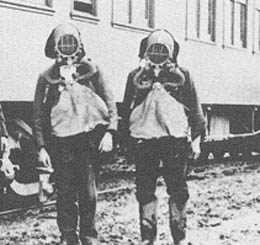On November 6, 1910, an explosion kills 16 coal miners in the Pacific Coast Company Lawson Mine at Black Diamond in eastern King County. Because the slope caved in on the miners, five bodies are never recovered. The cause of the accident remains unknown.
Disaster at Black Diamond
The explosion and cave-in killed 16 men. Seven were married, and five left behind at least one child. Most of the men were being paid a daily wage of $3.15, though one, Julius Persyn, was making $3.80. The dead were identified as:
Julius Persyn, 30, Italian nationality, married, one child
Fred Setti, 29, Italian, married, one child
Cezar Bael, age unknown, Belgian, married, one child
Joe Kronenberg, 30, Polish, married, one child
Mactili Fanstina, 33, Italian, married, three children
C. Biagi, 28, Italian, married
Julius Cappiati, 30, Italian, married
Frank Gardini, 24, Italian, single
Isadore Gardini, 22, Italian, single
Dom Gregois, 24, Italian, single
Albert Fontana, 25, Italian, single
Frank Vergan, 23, Italian, single
Mat Galope, 19, Austrian, single
Dave Lunden, 34, Finn, single
Oscar Bael, age unknown, Belgian, single
Girili Maes, 33, Belgian, single
Rescue efforts included the use of four new Draeger oxygen units supplied by the Mine Rescue Station at the University of Washington. The Draeger equipment had been demonstrated at the 1909 Alaska-Yukon-Pacific Exposition in Seattle. Several months later, in March 1910, the Mine Rescue Station was established with contributions from Washington mines. The station trained mine workers to use the equipment in smoke and gas filled mine tunnels.
Following the disaster, the state's Inspector of Coal Mines reported that although the number of mining fatalities had increased, improvements to the industry had taken effect. They included a law raising the minimum age for underground workers from 14 to 16; a law raising the minimum age for outside workers from 12 to 14; and an eight-hour work day.

